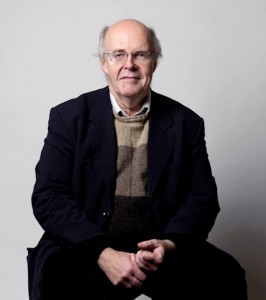- Rendez-vous de l'Institut
- Conference
Tout ce que vous voulez savoir sur L’Hortus Palatinus d’Heidelberg : un jardin singulier au cœur du Palatinat, conçu par Salomon de Caus, ingénieur normand (1576-1626) by Jean-Pierre LE GOFF – Château de Bénouville
All you have ever wanted to know about the Hortus Palatinus in Heidelberg: a quite singular garden in the heart of the Palatinate, designed by the Norman engineer, Salomon de Caus (1576-1626)
It was a Norman engineer of Protestant origin, Salomon de Caus (1576-1626) – a master drawing artist for Princess Elizabeth Stuart, the daughter of the Prince of Wales and future wife of Frederick V – who was entrusted with the design and the decor of the gardens the Prince had built from 1614 to 1620 for his residence in Heidelberg. The Prince’s court indulged in considering the site as the eighth wonder of the world. But for many a reason: these gardens, which were typical of a certain declining anglicised mannerism and which heralded, from a technical point of view, the French formal gardens of the Grand Siècle, were organised in hillside terraces. This required for the designer to conduct extensive land filling operations and for the prodigies of hydraulic science to populate the gardens with intermittent fountains and caves equipped with automated devices. Since the gardens were destroyed in 1630, when S. de Caus was still alive, we can enjoy a guided and illustrated tour via plates from the engineer’s drafts, like mysterious snippets of what was, indeed, a ‘marvellous’ project.
Jean-Pierre Le Goff
Jean-Pierre Le Goff is currently retired from Caen University, where he taught mathematics, epistemology and the history of science, along with the history of graphic art. His work on the relationships between the arts and the sciences has led him to conduct a cross study of their theoretical and practical aspects and to edit and/or translate a number of perspective views or architectural drafts such as the De Prospettiva Pingendi de Piero della Francesca, commissioned by Daniel Arasse, and the Complete Works of Girard Desargues, commissioned by René Taton. He is currently working on drafts by Sebastiano Serlio, Jean Cousin, Salomon de Caus & alii, in an attempt to determine the history of the representational modes associated with drawing, painting, civil and military architecture, and of theatre decoration and the art of gardens. Since 2014, he has been co-directing, along with Huguette Legros – a Caen University medieval specialist – a collection of works (published by Les Cahiers du Temps) which reviews the cycle of themed conferences held at the Fine Arts Museum in Caen, organised by the Société des Amis du Musée.


